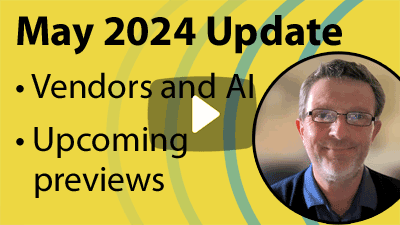 Remaining sceptical
Remaining sceptical
Jinfo Blog
13th April 2010
By Anne Jordan
Item
The web in general, and social media in particular, have been credited with creating a culture of openness, underpinning a growing trend towards unlocking government data. A number of Livewire postings have welcomed public data initiatives, but some recent news items have reminded me that we still have a long way to go. A new report from Deloitte, âUnlocking Government: How Data Transforms Democracyâ looks at how government data is becoming more open than ever before, giving examples from around the world. The report at http://digbig.com/5bbkge states that âOpen Govâ initiatives are largely focused on four areas: 1) Cataloguing sources of data; 2) Aggregating raw data into a single platform; 3) Encouraging users to develop non-traditional applications with government data; and 4) Mashing it up in ways that make it more meaningful to its consumers. However, issues remain. An article in The Guardian earlier this year showed that the UK government is rejecting increasing numbers of freedom of information requests (http://digbig.com/5bbkgf). The piece cited research by Sweet & Maxwell which showed the Cabinet Office as worst-offending department; it refused more than half of requests filed in the third quarter of 2009. In Aprilâs edition of Information World Review, Tim Buckley Owen reports that the 30-year rule for the release of Cabinet papers is being progressively reduced to 20 years (http://digbig.com/5bbkgg). Whilst welcoming this, he questions why it will take 15 years to phase in and why the new exemption for the monarch, heir and second in line to the throne. On a positive note, the UK mapping agency, Ordnance Survey (OS), has just launched a service offering free access to much of its map data (http://digbig.com/5bbkgj). However, there are those who would argue that this is long overdue â as a government agency, it collects data on our behalf. So whilst we applaud the positives in recent initiatives to make public data more accessible to web users, there is still a long way to go.
What's new at Jinfo?
Community session
11th December 2024
2025 strategic planning; evaluating research reports; The Financial Times, news and AI
5th November 2024

How are information managers getting involved with AI? Navigating privacy, ethics, and intellectual property
- 2025 strategic planning; evaluating research reports; The Financial Times, news and AI
5th November 2024 - All recent Jinfo Subscription content
31st October 2024 - End-user training best practice research
24th October 2024
- Jinfo Community session (TBC) (Community) 23rd January 2025
- Clinic on contracting for AI (Community) 11th December 2024
- Discussing news and AI strategies with the Financial Times (Community) 21st November 2024
Learn more about the Jinfo Subscription

